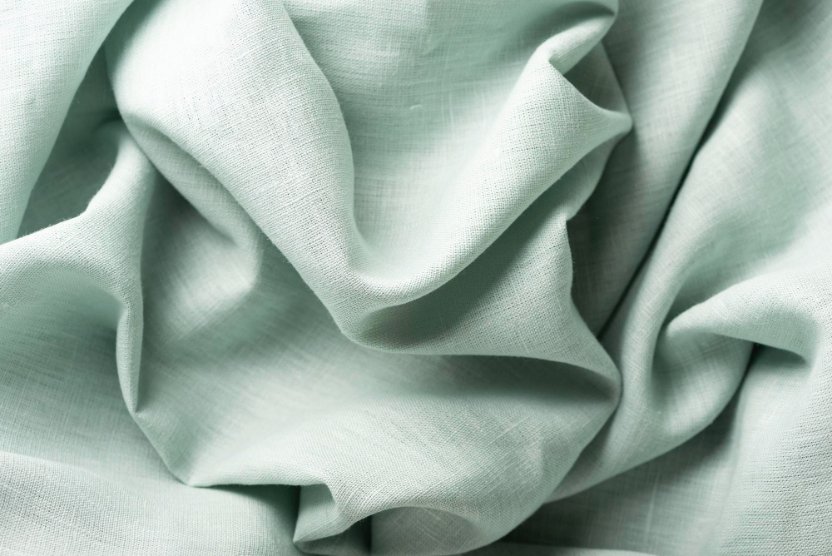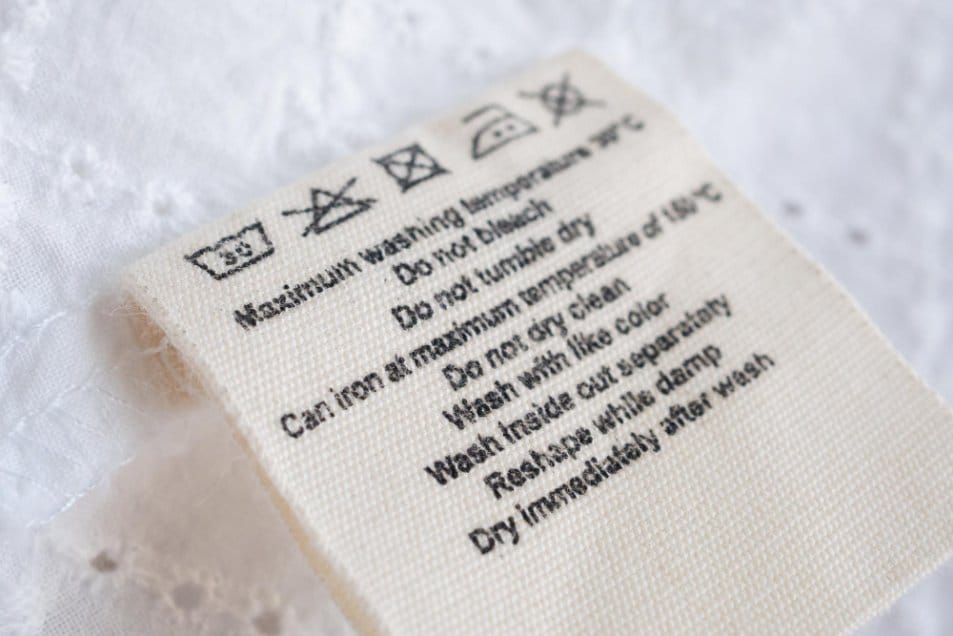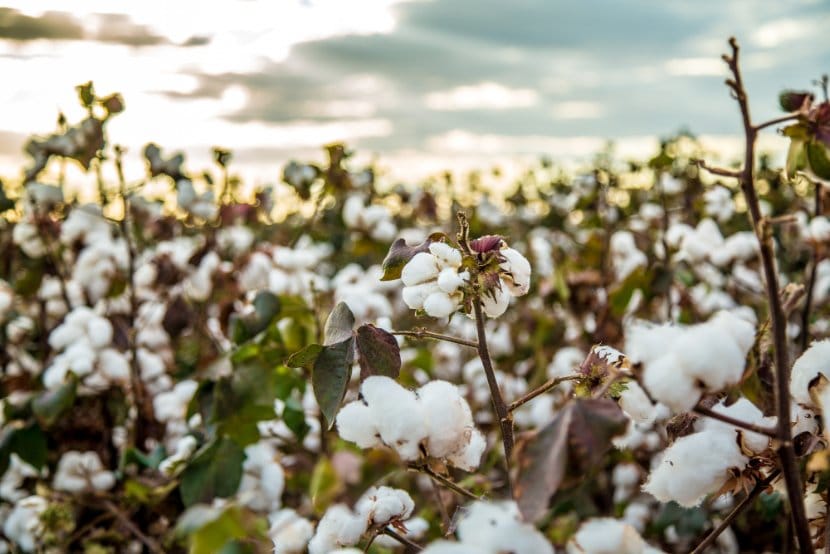Discover everything you need to know about cotton lawn fabric, from properties to sewing tips
Table of Contents
- What is Cotton Lawn Fabric?
- Key Properties and Benefits
- Technical Specifications
- Cotton Lawn vs Other Fabrics
- History and Evolution
- Manufacturing Process and Quality
- Uses and Applications
- Brand Recommendations
- Complete Sewing Guide
- Troubleshooting Common Issues
- Care and Maintenance
- Sustainability and Ethics
- Buying Guide
- Frequently Asked Questions
What is Cotton Lawn Fabric?
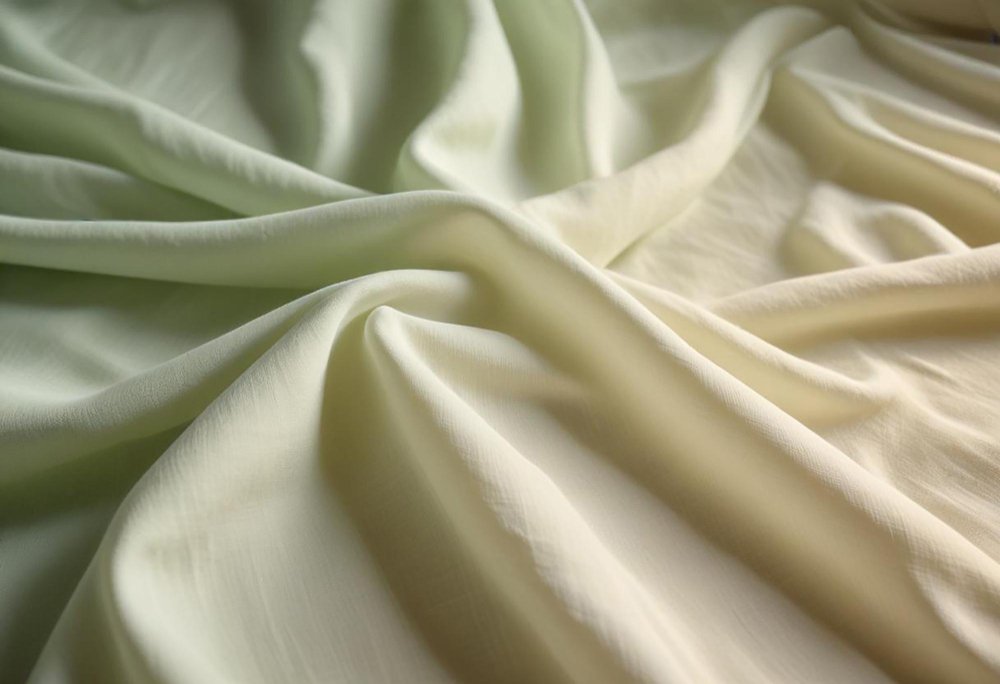
Cotton lawn is a lightweight, plain weave fabric made from 100% cotton fibers. This textile stands out for its smooth, crisp finish and slightly lustrous appearance. The fabric gets its name from the French city of Laon, where it was first produced in large quantities during medieval times.
You’ll recognize cotton lawn by its distinctive characteristics: it feels silky to the touch, has a semi-transparent quality, and maintains structure without being stiff. The fabric achieves its unique properties through a high thread count (typically 150-200 threads per inch) and precise plain weave construction.
Weight Range
80-120 GSMLightweight and breathable
Thread Count
150-200High quality construction
Composition
100% CottonNatural fiber purity
Shrinkage
3-5%First wash shrinkage
Is Lawn 100% Cotton?
Yes, traditional cotton lawn fabric is made from 100% cotton fibers. However, you might occasionally find blends that combine cotton with small percentages of other fibers for specific properties. When shopping, always check the fabric content label to ensure you’re getting pure cotton lawn if that’s what you need for your project.
What is Another Name for Cotton Lawn?
Cotton lawn goes by several names depending on the region and specific characteristics. You might see it called “lawn cotton,” “cotton batiste” (though batiste is technically different), or simply “lawn fabric.” In some markets, particularly high-end retailers, you’ll find it referenced as “voile lawn” when it has an extremely fine weave.
What is Cotton Lawn Fabric Called in English?
In English, this fabric is called “cotton lawn,” “lawn cotton,” or simply “lawn fabric.” The term derives from the French city of Laon where the fabric was originally produced. Some regions may also refer to it as “cotton batiste” or “fine cotton,” though these terms can describe slightly different fabrics.
What is 100% Cotton Lawn Fabric?
100% cotton lawn fabric is a lightweight, plain weave textile made entirely from cotton fibers. It’s characterized by a high thread count (150-200 threads per inch), smooth finish, and semi-transparent quality. The “lawn” designation comes from its origins in Laon, France, where this weaving technique was developed.
Key Properties and Benefits

Is Cotton Lawn Fabric Good or Bad?
Cotton lawn fabric is excellent for specific applications, particularly summer clothing and delicate projects. Its benefits far outweigh its limitations when used appropriately.
Advantages
- Exceptionally breathable and cool
- Soft, comfortable feel against skin
- Beautiful drape and flow
- Takes dyes beautifully for vibrant colors
- Easy to sew with proper techniques
- Holds its shape well
- Natural fiber benefits
- Relatively wrinkle-resistant
Limitations
- Can be semi-transparent
- May require lining for some projects
- Needs gentle handling during sewing
- More expensive than basic cotton
- Limited warmth for cold weather
- Can show wrinkles if mistreated
Is Cotton Lawn Soft?
Cotton lawn is remarkably soft, especially when made from combed cotton fibers. The manufacturing process removes shorter fibers and impurities, leaving longer, smoother strands that create the fabric’s signature silky feel. High-quality cotton lawn rivals much more expensive fabrics in terms of hand feel.
What is the Softest Type of Cotton?
Pima cotton and Egyptian cotton are generally considered the softest types due to their long staple fibers. For lawn fabrics specifically, those made from combed cotton (where short fibers are removed) feel softest. Organic cotton lawn also tends to be softer due to chemical-free processing that preserves the natural fiber properties.
Is Cotton Lawn Lightweight?
Yes, cotton lawn is definitely lightweight. At 80-120 GSM (grams per square meter), it falls into the lightweight category of fabrics. This makes it perfect for flowing garments, summer clothing, and projects where you want movement without bulk.
Is Cotton Lawn Fabric See Through?
Cotton lawn has a semi-transparent quality, which means it can be somewhat see-through depending on the specific weight and color. Lighter colors and finer weaves tend to be more transparent. For garments, you might need to consider underlayers or lining depending on your comfort level and the intended use.
Technical Specifications
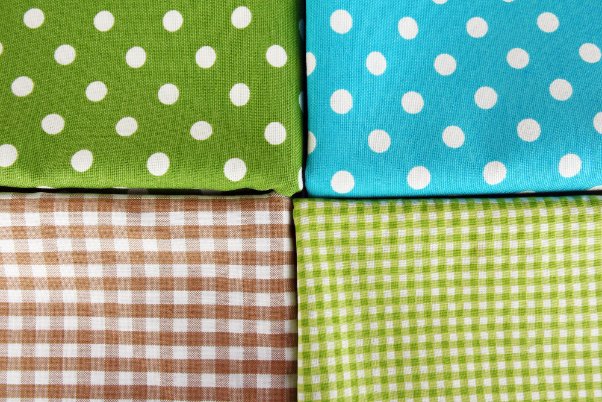
What Weight is Cotton Lawn Fabric?
Cotton lawn typically weighs between 80-120 GSM (grams per square meter). To put this in perspective:
| Fabric Type | Weight (GSM) | Relative Weight |
|---|---|---|
| Cotton Voile | 60-80 | Ultra-lightweight |
| Cotton Lawn | 80-120 | Lightweight |
| Cotton Poplin | 120-140 | Medium-lightweight |
| Quilting Cotton | 140-160 | Medium-weight |
What is the Thinnest Cotton Fabric?
While cotton lawn is quite thin, cotton voile holds the title for the thinnest commonly available cotton fabric at 60-80 GSM. Cotton lawn comes in second, making it an excellent choice when you want something thin and delicate but with slightly more structure than voile.
Thread Count Matters
The magic of cotton lawn lies in its high thread count. With 150-200 threads per inch, it achieves its smooth texture and durability. Compare this to regular cotton at 80-120 threads per inch. This density is what gives cotton lawn its premium feel and performance.
Fiber Length Details
Cotton lawn quality depends significantly on the staple length of the cotton fibers used:
- Long-staple cotton: Creates smoother, stronger fabrics with less pilling
- Extra-long staple: Premium varieties like Pima and Egyptian cotton for luxury lawn fabrics
- Short-staple: More economical but can result in less smooth texture
Cotton Lawn vs Other Fabrics
What is the Difference Between Cotton and Cotton Lawn?
“Cotton” is the fiber, while “cotton lawn” describes how that fiber is woven and finished. Regular cotton fabric can be heavy denim, thick canvas, or medium-weight quilting cotton. Cotton lawn specifically refers to the lightweight, high thread count, plain weave version that has the characteristic smooth, crisp feel.
Is Cotton Lawn the Same as Quilting Cotton?
No, cotton lawn and quilting cotton are quite different. Quilting cotton is heavier (140-160 GSM), designed for structure and durability. Cotton lawn is much lighter (80-120 GSM) and focuses on drape and flow. Using quilting cotton patterns with lawn fabric often results in garments that look too loose or lack the intended structure.
Is Cotton Lawn the Same as Poplin?
Cotton lawn and poplin are related but distinct. Poplin has a subtle ribbed texture due to its weave structure, while lawn has a smooth surface. Poplin is also typically heavier and more structured, making it better for tailored pieces like button-up shirts.
What is the Difference Between Cotton Lawn and Cotton Voile?
The main differences lie in weight and structure:
Complete guide to sewing with different cotton fabrics including cotton lawn
| Characteristic | Cotton Lawn | Cotton Voile |
|---|---|---|
| Weight | 80-120 GSM | 60-80 GSM |
| Hand Feel | Crisp yet soft | Very soft, fluid |
| Transparency | Semi-transparent | More sheer |
| Structure | Holds shape better | Very drapey |
| Best For | Blouses, skirts, dresses | Scarves, linings, layering |
What Fabric is Similar to Cotton Lawn?
Several fabrics share characteristics with cotton lawn:
- Cotton Voile: Lighter and more flowing
- Cotton Batiste: Similar weight but different finishing
- Fine Cotton Chambray: Slightly heavier with color variation
- Cotton Organdy: Crisper and more structured
What is the Difference Between Lawn and Muslin?
Lawn and muslin serve different purposes entirely. Muslin is a loosely woven, inexpensive cotton used for testing patterns or as utility fabric. Lawn is a refined, high-quality textile with tight weave and smooth finish intended for finished garments. Think of muslin as your practice fabric and lawn as your performance fabric.
History and Evolution
Cotton lawn has a fascinating history that spans centuries. Originally developed in the French city of Laon during medieval times, the fabric began as a linen textile before evolving into the cotton version we know today.
Medieval Origins in Laon, France
The name “lawn” fabric derives directly from the French city of Laon, where skilled weavers first developed this fine textile during the medieval period. Originally, lawn was made from linen fibers, but the weaving techniques established in Laon would later be adapted for cotton production.
From Linen to Cotton Transition (1600s)
The transition from linen to cotton lawn occurred during the 1600s when maritime trade routes opened access to Indian cotton. French weavers discovered that cotton fibers could be woven using their traditional techniques, creating a softer, more comfortable fabric while maintaining the crisp finish they were known for.
Liberty Fabrics Revolution (1924)
In 1924, Britain’s Liberty Fabrics redefined cotton lawn quality with their Tana Lawn™ collection. Using African long-staple cotton, they created what many consider the gold standard for lawn fabrics. Liberty’s designs transformed cotton lawn from a basic textile into a luxury material associated with high-end fashion.
Pakistani Lawn Culture
Pakistan has developed a unique seasonal cotton lawn culture, where design houses release highly anticipated collections each spring. These releases generate significant demand and have become cultural events, blending traditional craftsmanship with contemporary design.
Modern Manufacturing Developments
Today’s cotton lawn benefits from advanced manufacturing techniques including computerized weaving, improved cotton varieties, and eco-friendly processing methods. Modern quality control ensures consistent thread counts and finishes that medieval weavers could only dream of achieving.
Manufacturing Process and Quality
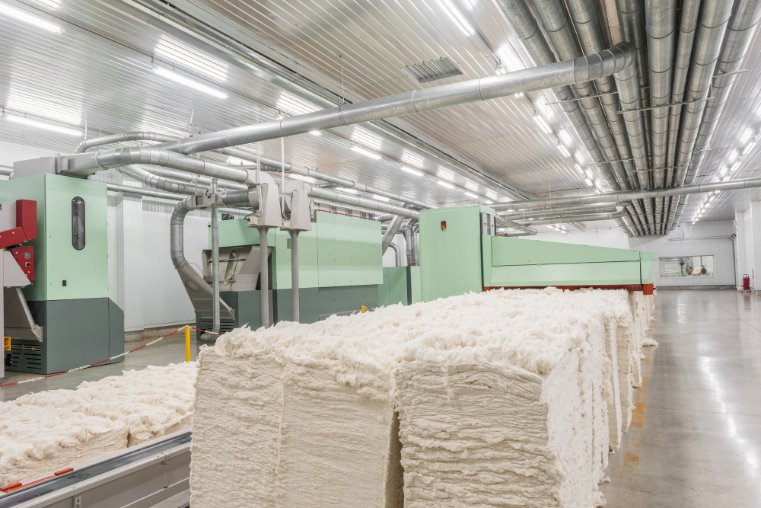
Plain Weave Construction
Cotton lawn uses a plain weave structure where warp and weft threads alternate in a simple over-under pattern. This creates the fabric’s stability while allowing for the high thread count that gives lawn its smooth finish.
Cotton Lawn Manufacturing Process
Combed vs Carded Yarn Comparison
The quality of cotton lawn largely depends on the yarn preparation method:
| Process | Characteristics | Cost Impact | Best Use |
|---|---|---|---|
| Combed Yarn | Smoother, stronger, softer | 15-20% higher cost | Luxury garments |
| Carded Yarn | More texture, cost-effective | Standard pricing | Casual wear |
Quality Indicators and Testing
High-quality cotton lawn undergoes several tests to ensure consistency:
- Thread count verification: Ensuring 150-200 threads per inch
- Tensile strength testing: Measuring fabric durability
- Shrinkage testing: Predicting dimensional stability
- Colorfastness testing: Ensuring dye permanence
Uses and Applications
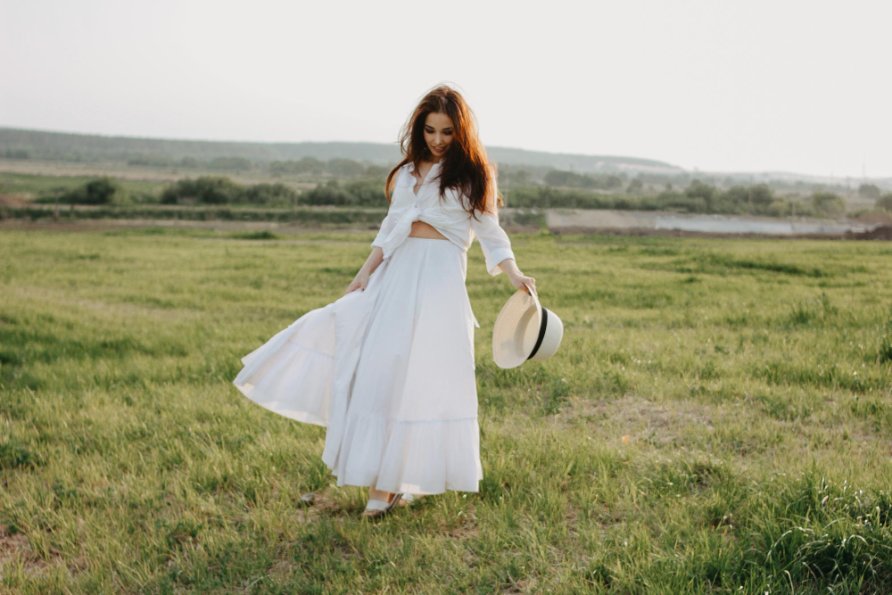
Which Fabric is Best for Summer?
Cotton lawn is exceptional for summer wear. Its lightweight nature and breathable weave make it ideal for hot weather. The fabric allows air circulation while providing coverage, making it perfect for warm climate clothing.
Five creative ways to use cotton lawn fabric in your sewing projects
Is Cotton Lawn Good for Summer?
Cotton lawn is exceptional for summer wear due to its breathability and lightweight properties. The natural cotton fibers wick moisture away from the body while the loose weave allows for excellent air circulation.
When to Use Lawn Fabric?
Cotton lawn works best for:
Summer Garments
Flowing dresses, lightweight blouses, and breezy skirts that need movement without bulk.
Children’s Clothing
Gentle on sensitive skin and comfortable for active play.
Lining Applications
Perfect weight for lining delicate or sheer garments.
Home Decor
Lightweight curtains, pillow covers, and table linens.
What is Cotton Lawn Fabric Used For?
Cotton lawn is versatile and used for summer dresses, blouses, children’s clothing, lightweight skirts, pajamas, linings, curtains, and home decor items. Its combination of softness, breathability, and structure makes it ideal for garments that need to be comfortable yet maintain their shape.
Is Cotton Lawn Good for Skirts?
Cotton lawn is excellent for skirts, particularly A-line, circle, or pleated styles. The fabric’s drape creates beautiful movement, and its ability to hold pleats makes it ideal for structured designs. For straight pencil skirts, you might want a slightly heavier fabric for better structure.
Can You Quilt with Cotton Lawn?
While you can use cotton lawn for quilting, it’s not the traditional choice. Its lightweight nature makes it better suited for clothing quilts, art quilts, or decorative pieces rather than bed quilts that need durability. If you do use it for quilting, consider using it as a backing fabric or for delicate appliqué work.
Is Lawn Fabric Good for Winter?
Cotton lawn alone isn’t ideal for winter wear due to its lightweight nature. However, it can work beautifully as a layering piece under sweaters or as a lining for winter garments. The key is using it strategically rather than as a standalone winter fabric.
Seasonal Suitability Guide
Cotton lawn excels in warm weather but has limited cold-weather applications. For summer, it’s outstanding due to breathability and lightweight comfort. In winter, it works well as a layering piece under sweaters or as lining material. Spring and fall offer the most versatility for cotton lawn garments.
Brand Recommendations
Premium Brands
Liberty Fabrics
The gold standard for cotton lawn. Their Tana Lawn™ collection offers exceptional quality and iconic prints. Expect to pay premium prices for unmatched quality.
Robert Kaufman
Offers high-quality lawn cotton with excellent color reproduction and consistent thread counts. More accessible pricing than Liberty while maintaining quality.
Art Gallery Fabrics
Known for their cotton lawn collections with contemporary designs. Excellent quality with modern aesthetic appeal.
Budget-Friendly Options
For those starting with cotton lawn or working on practice projects, many fabric stores offer house-brand lawn cotton that provides good quality at accessible prices. While these may not have the luxury feel of premium brands, they’re excellent for learning and everyday projects.
Quality vs Price Analysis
When choosing cotton lawn, consider the project’s intended use. Premium brands justify their cost for special garments or heirloom pieces, while mid-range options work perfectly for everyday wear and practice projects.
Complete Sewing Guide
Is Cotton Lawn Easy to Sew?
Cotton lawn is relatively easy to sew once you understand its characteristics. It’s more forgiving than very delicate fabrics like silk chiffon but requires more care than heavy cotton. With the right techniques, even beginners can achieve beautiful results.
Is Cotton Lawn Fabric Easy to Sew?
Yes, cotton lawn is generally easy to work with when you use appropriate techniques. The key is understanding its lightweight nature and adjusting your approach accordingly.
Essential Tools and Needle Selection
Needle and Thread Selection
Pre-Sewing Preparation Techniques
Always pre-wash your cotton lawn fabric before cutting. This prevents the 3-5% shrinkage that typically occurs with the first wash. Use cool water and air dry or low heat to preserve the fabric’s crisp finish.
Pro Tip: Spray Starch Technique
If you find cotton lawn too lightweight to handle during cutting, lightly spray with starch and press. This temporarily adds body to make cutting and marking easier while not affecting the final garment.
Cutting and Marking Tips
- Use sharp fabric cutting tools to prevent fraying
- Consider rotary cutters for clean, precise edges
- Use fine pins or pattern weights to avoid leaving holes
- Mark with washable fabric markers or tailor’s chalk
Best Seam Finishes for Cotton Lawn
French Seams
Perfect for lightweight fabrics. Encases raw edges for a professional finish and prevents fraying.
Serged Edges
Quick and effective for everyday garments. Prevents fraying while adding stretch to seams.
Pinked Edges
Simple option for projects that won’t be washed frequently. Use sharp pinking shears for best results.
Troubleshooting Common Issues
Preventing Puckering
Puckering is the most common issue when sewing cotton lawn. Here’s how to prevent it:
Anti-Puckering Checklist
Handling Fabric Shifting
Cotton lawn can be slippery during sewing. Use these techniques to maintain control:
- Pin frequently, especially on curves
- Use a walking foot for long seams
- Consider basting by hand for tricky areas
- Keep fabric well-supported while sewing
Pattern Recommendations
When choosing sewing patterns for cotton lawn, look for designs that work with the fabric’s characteristics:
| Pattern Type | Suitability | Why It Works |
|---|---|---|
| Gathered or Pleated Skirts | Excellent | Fabric holds pleats well, creates beautiful movement |
| Flowing Blouses | Excellent | Drape enhances design, comfortable for daily wear |
| A-line Dresses | Very Good | Natural drape creates flattering silhouette |
| Straight Shift Dresses | Fair | May lack structure, consider adding lining |
| Fitted Blazers | Poor | Lacks structure needed for tailored pieces |
Thread Selection Guide
Thread choice significantly impacts your results with cotton lawn:
- 60-weight thread: Best for very fine work and delicate seams
- 50-weight thread: Standard choice for most cotton lawn projects
- Polyester vs cotton thread: Polyester offers more stretch and durability
Care and Maintenance
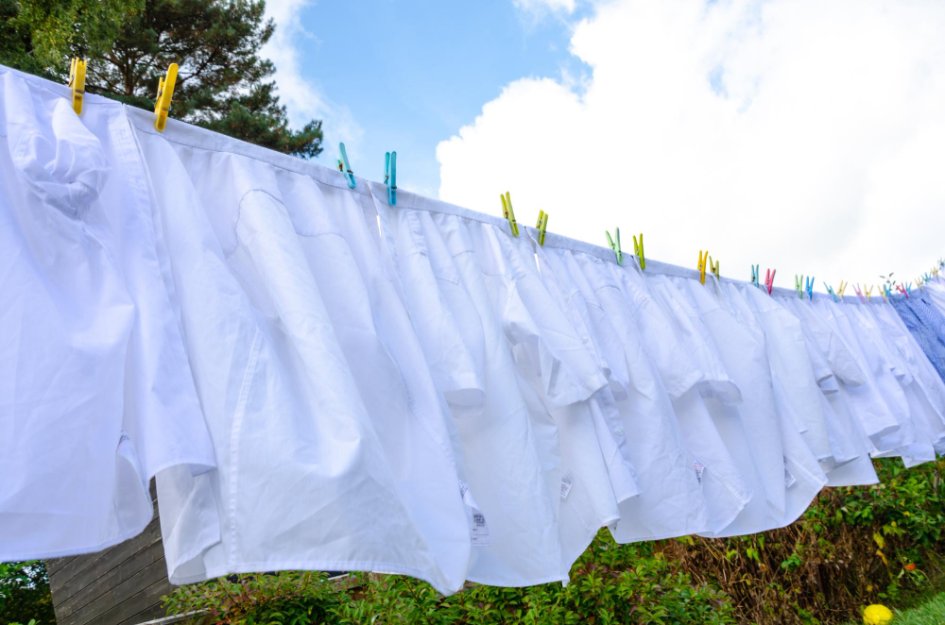
Does Cotton Lawn Shrink?
Yes, cotton lawn typically shrinks 3-5% during the first wash. This is normal for natural cotton fibers. After the initial shrinkage, properly cared-for cotton lawn should remain stable in size.
Does Cotton Lawn Wrinkle Easily?
Cotton lawn is relatively wrinkle-resistant compared to other lightweight fabrics, but it can wrinkle if mistreated. The high thread count and tight weave help resist creasing, but proper care extends this benefit.
Complete Care Instructions
For more detailed fabric care information, you might find our cotton care guide helpful for general cotton maintenance principles.
Stain Removal Techniques
Cotton lawn responds well to standard cotton stain removal techniques:
- Fresh stains: Rinse immediately with cold water
- Grease stains: Apply dish soap directly, let sit 10 minutes before washing
- Protein stains: Use enzyme-based pre-treatment
- Set-in stains: Soak in oxygen bleach solution safe for colored fabrics
Seasonal Care Tips
Adjust your care routine based on the season and frequency of use. Summer garments may need more frequent washing, while stored winter pieces benefit from proper folding and breathable storage.
Sustainability and Ethics
Environmental Impact
Cotton lawn, being 100% natural cotton, is biodegradable and renewable. However, conventional cotton production has environmental concerns including water usage and pesticide application. Look for these certifications when shopping sustainably:
GOTS Certified
OrganicGlobal Organic Textile Standard ensures organic fibers and ethical processing
OEKO-TEX
SafeTests for harmful chemicals and ensures human-ecological safety
BCI Cotton
BetterBetter Cotton Initiative promotes sustainable farming practices
What are the Disadvantages of Cotton Fabric?
Cotton fabric disadvantages include shrinkage (3-5% for cotton lawn), potential wrinkling, longer drying times compared to synthetics, and possible fading with frequent washing. Cotton lawn specifically can be semi-transparent and may require lining for some applications. However, proper care and quality selection minimize most issues.
Organic Cotton Lawn Options
Organic cotton lawn offers the same properties as conventional versions while supporting sustainable agriculture. While typically 10-20% more expensive, organic options provide peace of mind for environmentally conscious sewers. The quality often matches or exceeds conventional cotton due to longer fiber length and careful processing.
Ethical Sourcing Considerations
When purchasing cotton lawn, consider brands that provide transparency about their supply chain. Many premium manufacturers now offer information about their cotton sources and processing facilities. Understanding cotton production helps you make informed choices about the fabrics you buy.
Buying Guide

What to Look For
When shopping for cotton lawn fabric, examine these quality indicators:
Thread Count
Look for 150-200 threads per inch. Higher counts generally indicate better quality and durability.
Hand Feel
Quality cotton lawn should feel smooth and silky, not rough or scratchy. The fabric should have a slight crisp feel.
Weave Consistency
Hold fabric up to light to check for even weave. Irregular areas indicate lower quality manufacturing.
Color Clarity
Colors should be vibrant and even. Muddy or streaky colors suggest poor dyeing processes.
Price Ranges by Quality Level
| Quality Level | Price Range (per yard) | Best For |
|---|---|---|
| Budget | $8-15 | Practice projects, everyday wear |
| Mid-range | $15-25 | Quality garments, gifts |
| Premium | $25-45 | Special occasion wear, heirloom pieces |
| Luxury (Liberty) | $45+ | Investment pieces, collectors |
Where to Buy
Cotton lawn is available from various sources:
- Specialty fabric stores: Best selection and expert advice
- Online retailers: Wider variety, competitive pricing
- Quilting shops: May carry lawn cotton for specific projects
- Department store fabric sections: Limited selection but accessible
Yardage Planning Tips
Cotton lawn typically comes in 44-45 inch widths. Plan your yardage based on your pattern requirements, but consider these factors:
- Pre-shrinkage: Add 10% extra for shrinkage
- Pattern matching: Add 15-20% extra for prints that need matching
- Practice pieces: Buy extra for testing stitches and techniques
Frequently Asked Questions
Which fabric is best for summer clothing?
Cotton lawn is one of the best choices for summer clothing due to its lightweight nature, breathability, and moisture-wicking properties. Other excellent summer fabrics include cotton voile, linen, and bamboo blends. Cotton lawn specifically excels because it maintains structure while staying cool and comfortable.
What is cotton lawn fabric used for?
Cotton lawn is versatile and used for summer dresses, blouses, children’s clothing, lightweight skirts, pajamas, linings, curtains, and home decor items. Its combination of softness, breathability, and structure makes it ideal for garments that need to be comfortable yet maintain their shape.
What is 100% cotton lawn fabric?
100% cotton lawn fabric is a lightweight, plain weave textile made entirely from cotton fibers. It’s characterized by a high thread count (150-200 threads per inch), smooth finish, and semi-transparent quality. The “lawn” designation comes from its origins in Laon, France, where this weaving technique was developed.
What is the English name for lawn fabric?
In English, this fabric is called “cotton lawn,” “lawn cotton,” or simply “lawn fabric.” The term derives from the French city of Laon where the fabric was originally produced. Some regions may also refer to it as “cotton batiste” or “fine cotton,” though these terms can describe slightly different fabrics.
What are the disadvantages of cotton fabric?
Cotton fabric disadvantages include shrinkage (3-5% for cotton lawn), potential wrinkling, longer drying times compared to synthetics, and possible fading with frequent washing. Cotton lawn specifically can be semi-transparent and may require lining for some applications. However, proper care and quality selection minimize most issues.
What is the softest type of cotton?
Pima cotton and Egyptian cotton are generally considered the softest types due to their long staple fibers. For lawn fabrics specifically, those made from combed cotton (where short fibers are removed) feel softest. Organic cotton lawn also tends to be softer due to chemical-free processing that preserves the natural fiber properties.
Is lawn a good fabric for different seasons?
Cotton lawn excels in warm weather but has limited cold-weather applications. For summer, it’s outstanding due to breathability and lightweight comfort. In winter, it works well as a layering piece under sweaters or as lining material. Spring and fall offer the most versatility for cotton lawn garments.
Conclusion
Cotton lawn fabric represents the perfect balance between delicate beauty and practical functionality. This lightweight, breathable textile offers sewers and fashion enthusiasts a premium material that works beautifully for summer clothing, children’s wear, and elegant home decor projects.
Key Takeaways
Essential Points to Remember
- Weight and Structure: At 80-120 GSM, cotton lawn provides lightweight comfort with enough structure for shaped garments
- Quality Matters: Look for 150-200 thread count and combed cotton for the best results
- Seasonal Suitability: Excellent for warm weather, adequate for layering in cooler months
- Care Requirements: Pre-wash to prevent shrinkage, use appropriate needles and techniques for best results
- Versatile Applications: Perfect for summer dresses, blouses, children’s clothing, and home decor
Making the Right Choice
When deciding whether cotton lawn is right for your project, consider the end use, season, and desired aesthetic. This fabric shines in applications where comfort, breathability, and elegant drape are priorities. While it may require more careful handling than heavier cottons, the results justify the extra attention.
Recommendations for Success
Start with quality fabric from reputable suppliers, invest in proper tools and notions, and practice techniques on scraps before beginning your main project. Whether you’re creating a summer dress or exploring easy sewing projects, cotton lawn offers an accessible entry point into working with premium fabrics.
The combination of traditional craftsmanship and modern manufacturing has made cotton lawn more accessible than ever while maintaining the quality that has made it a favorite for generations. Understanding this fabric’s characteristics and proper handling techniques will help you create beautiful, long-lasting garments and home goods that showcase the unique properties that make cotton lawn special.
Remember that successful sewing with cotton lawn comes from respecting the fabric’s characteristics rather than fighting against them. Embrace its flowing nature, plan for its transparency, and enjoy the comfortable, elegant results that only quality cotton lawn can provide.
Helpful Tools and Resources
Enhance your cotton lawn projects with these interactive tools:
- Fabric Weight Calculator – Choose perfect cotton GSM for any project
- Cotton Care Calculator – Smart fabric care recommendations
- Fabric Yardage Calculator – Calculate exact fabric needs
- Needle & Fabric Compatibility Chart – Choose perfect sewing machine needles
- Sewing Cost Calculator – Budget your sewing projects & startup costs

